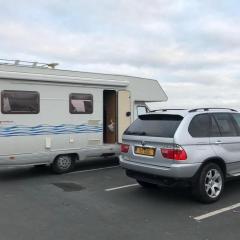Train Horn on F11 530

-
Latest Topics
-
0
Ambient lighting
Does any one know if the lighting is already installed? But not active? Or are the connections there but just no light? If so or not does anyone know anyone in Hampshire who would be able to help me have the job done? In advance Thank you -
2
Recall letter
I just got one for my Porsche cayenne… it needs a plastic sleeve replacing on rhe gear stick…. if it’s like my bmw recall, they will give it a good valet for free too! 😂 also, make sure you get the recall done and documented as I have heard of insurance companies not paying if there are recalls which you have not had done. -
2
Recall letter
Morning Paul I had a similar conversation with our local Dealer a few months ago after receiving a Recall Letter edged in RED and contacting them to be told we will book you in but it may be a while as we are waiting for parts ?? It actually took 2 months (EGR recall) Unfortunately for the Dealers while they are aware of a Recall Program they don't control the stock to carry out the work or the sending of the letters bonkers really, they are also expected to fit in the work and not disrupt their normal service work. I also read recently (last week) that a Dutch company that supplies Micro processors to a huge number of Car makers in Europe and else where is closed at the moment due to US action after discovering they are actually owned by a Chinese consortium. A lot more shortages to come me thinks Dave -
4
New member, first time BMW owner.
Welcome to bmw club! Love the black alloys, they can really transform some cars. -
2
Recall letter
I received a letter from BMW today recalling my 330i in order to replace the starter motor which in the worst case scenario could catch fire. I was wondering if anyone else had received one or is it just aimed at the 330i series or is it across all model ranges. I got in touch with my local dealership who took my car and contact details and informed me that they would get in touch once they received a supply of starter motors, but it would more than likely be at least a month or longer until I would hear from them. Would be interested to hear if anyone else has had a similar experience.
-
-
Recent Achievements

.thumb.jpg.555807fc7d5c059a2b797cdec4cd5bd1.jpg)
.thumb.jpg.e64d78946fbad99dea313ac4d2619979.jpg)



Recommended Posts
BMW Official Store
Sponsored Ad
Name: eBay
BMW Model: BMW Store
BMW Year: 2024
Latest Deals
BMW Official Store for genuine BMW parts & accessoriesDisclaimer: As the club is an eBay Partner, The club may be compensated if you make a purchase via eBay links
Join the conversation
You can post now and register later. If you have an account, sign in now to post with your account.